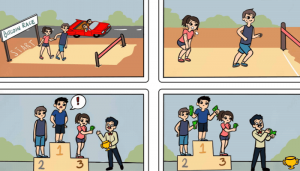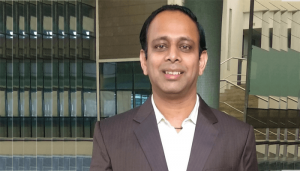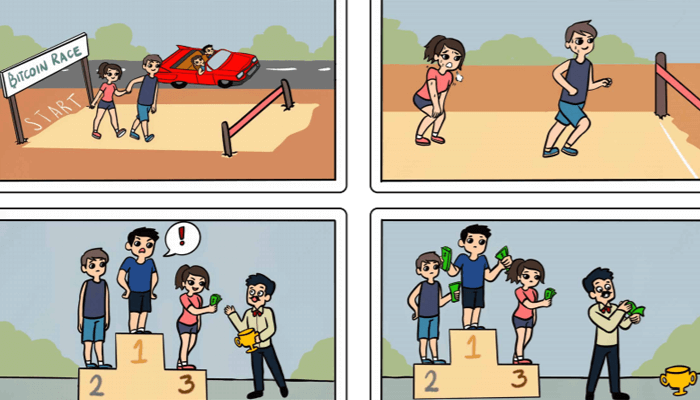At the 20th edition of the recently concluded International Conference on Autonomous Agents and MultiAgent Systems (AAMAS) 2021, IIITH researcher Anurag Jain won the Best Poster Design Award for innovatively capturing constraints faced in scaling blockchain technology with the help of a comic strip.
Early this month, IIITH researchers from the Machine Learning lab presented two papers at the virtually held AAMAS 2021, a highly acclaimed annual conference in the area of agents and multiagent systems. One of them was “A Multi-Arm Bandit Approach To Subset Selection Under Constraints” authored by Ayush Deva and Kumar Abhishek under the guidance of Dr. Sujit Gujar. The other was titled “We might walk together, but I run faster: Network Fairness and Scalability in Blockchains”, authored by Anurag Jain , Shoeb Siddiqui and Dr. Gujar. The abstract of the latter was presented by means of a poster which went on to bag the Best Poster Design Award.

Network Disparity Affects Scalability
At a time when thanks to the pandemic, blockchain technology is slowly gaining traction across sectors and countries, the researchers have attempted to put the spotlight on its scalability. With current legacy platforms such as Visa whose network settlement times and transactions per second far outstrip those of cryptocurrencies (Bitcoin offers 3.5 transactions per second), global efforts on building blockchains that offer scalability are underway. Explaining this in terms of an improvement in blockchain performance, Dr. Gujar says, “This means that from the current 4 transactions, it can achieve 40 or even 1,000 transactions per second.”

Deviations From Protocol
In the current blockchain scenario, with low transaction rates, the miners have equitable rights (in terms of computing power) to mine a block. In their paper, the researchers have tried to analyze what happens to the systems when they are scaled. “We are probably the first ever to analyse the effect of differences in network speeds on scaling up the blockchain ecosystem,” says Dr. Gujar. Referring to the famous blockchain scalability trilemma which states that scalability is possible but at the cost of decentralization and security, the research team claims that in this case, scalability will lead to unfairness in the system because of network disparity. With the help of mathematical modelling, they demonstrate how miners with relatively slower network bandwidth are at a disadvantage for mining blocks. They will lose interest and either drop off or try to act strategically by undercutting or petty mining rather than following prescribed protocols honestly. “Both these scenarios defy the purpose of blockchain technology”, says Dr. Gujar.
Comic Strip Design
With an eye-catching poster design of 4 panels depicting the scalability trilemma, the two kinds of network fairness, the strategic deviations and the analysis of strategic deviations on network fairness with the help of a game simulator, it was little wonder that Anurag won the best poster award. “The cartoon strips are computer generated vector graphics,” explains the 4th year Dual Degree student adding that he saw many professors at the conference, not only from the blockchain field but also from other fields getting attracted to it because they found it intriguing. “The experience was very positive. Despite the constraints of an online presence, I got a chance to interact with a lot of people from different backgrounds,” he says. Impressed by Anurag’s creativity, his advisor, Dr. Gujar is all praise for him and says that even as the design was underway, it was being held out as a model of inspiration for other students in the lab. “I am very happy it has resulted in this award,” he says. With a prize money of 300£, the researchers say they will be using it to buy books on Game Theory and MicroEconomics for the lab.

Current And Upcoming Works
Dr. Gujar’s current research focus has been on making the world fairer through game theory or machine learning. Last year at AAMAS (2020), he and his students proposed a model that demonstrated how fairness towards miners could be achieved through a minimum translation fee. Following the threads on ideas that were presented at last year’s conference, Anurag is currently working on more general models for fairness and scalability. While one model will attempt to scale them assuming there is no network disparity, the other will attempt to make it fair for miners and everybody in the blockchain ecosystem.



Next post